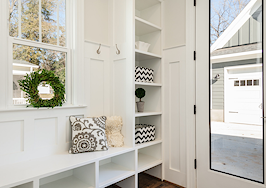For the past two months, Americans have spent more time in their homes than ever before, leading to the reconsideration of what home features are most important. Alongside the desire for bigger bathrooms, spacious outdoor spaces, and decked-out entertainment rooms, homebuilders are reporting an uptick in demand for green and sustainable housing.

Yuka Kato
“In light of the current economic crisis brought on by the pandemic, coupled with the fact that more people are spending time at home, sustainability is taking on a new look for many people,” Fixr Industry Analyst Yuko Kato said of the platform’s recent survey of 50 building experts. “By investing in sustainable design, you make your home more comfortable to live in, while also lowering your potential financial burden for the future.”
Of all the age ranges, 44 percent of builders said older millennials were most likely to focus on sustainable materials or green building methods during their homebuying journey. Thirty-seven percent said Gen-Xers were the most environmentally conscious, while 19 percent said the same of younger millennials. Baby Boomers came in last, with only 4 percent of builders saying boomers “are the most interested” in sustainability.
“Given that the oldest millennials are approaching 40 this year, with most of Gen X in their 40s and 50s, this makes sense because these are the ages most likely to own homes and to be in a position of upgrading them,” the report read. “Younger millennials are still in their mid-20s, so while millennials as a whole are more likely to pay for green features, it does make sense that it’s the middle-aged homeowners who are the most likely to be making the upgrades right now.”
When it comes to homeowners’ reasons for using sustainable materials and green building practices (materials and practices with a low environmental impact), builders said saving money is the main motivator.

Minimized energy consumption (58 percent), improved indoor air quality (40 percent), and better moisture and heat resistance and noise transference (40 percent) were the most popular features builders expected clients to request, as they all lower long-term maintenance costs.
Environmentally-friendly materials (29 percent), water conservation (29 percent), and zero energy transfer (20 percent) were the next most popular options, while passive heating (16 percent) and a green design or layout (4 percent) ranked last.
“By minimizing energy consumption as a whole, you lower your energy costs,” Kato said. “Minimizing energy consumption can take on many different forms, including tightening the building envelope and investing in more efficient appliances.”
In addition to a surge in low energy homes, 33 percent of builders anticipate homeowners will finally come around to installing solar panels to lower electricity costs.
Although more than a third of builders believe green insulation (39 percent) and water conservation (30 percent) are two of the most important green features to include in a home, nearly half said homeowners will focus on smart technology to monitor usage and lower costs.

“Experts were asked what they felt would gain a lot of traction in the coming year in terms of creating a more sustainable home,” the report explained. “They gave many mixed answers from solar panels to using materials that would last long term.”
“One thing that many experts were united on, however, is that smart homes will be part of that future, with 49 percent answering that they thought smart homes would take off in 2020.”







